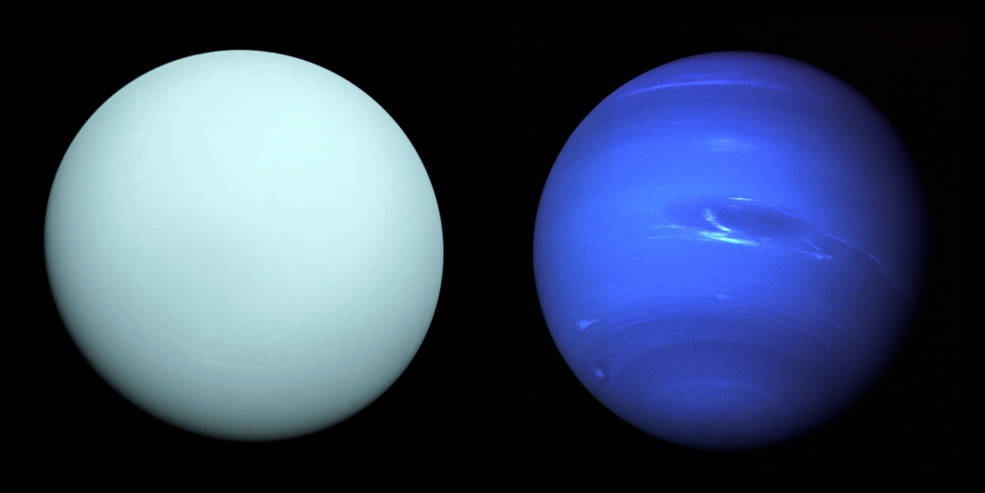What are the interiors like of Uranus and Neptune? Why are their magnetic fields different than other planets? Why are their winds and heat budgets so different from those observed on the other giant planets, Jupiter and Saturn?

“In addition to the planets themselves, their rings, satellites, and magnetospheres are also unique; a new mission would dramatically increase our understanding of the physical and chemical processes that control the properties and evolution of this system,” UTIG Research Associate Krista Soderlund said. “The majority of exoplanets that have been detected are ice giants, or similar in size to Uranus and Neptune. Thus, by studying these bodies within our own solar system, we will be able to better characterize exoplanets as well.”
Krista recently brought her expertise and questions to NASA’s Science Definition Team (SDT) for Ice Giants Mission Studies. As one of 14 people on the SDT, she helped assess science priorities and mission concepts for future missions to Uranus and Neptune. They built on the decadal survey, “Visions and Voyages for Planetary Science in the Decade 2013-2022.” The final report, “Ice Giants Pre-Decadal Survey Mission Study Report,” outlines science objectives, potential missions, and cost.
The study identified 12 priority science objectives, including constraining the structure and characteristics of the planet’s interior, and understanding the planet’s composition. Other priorities include determining heat balance, mapping the shape and surface of satellites, and investigating the solar wind-magnetosphere-ionosphere interactions.
To accomplish these scientific priorities, the team also determined what instruments would be necessary to gather the necessary data. These included a camera, Doppler Imager, and mass spectrometer. The study addressed science value versus cost of potential missions.
It takes many years to reach the Ice Giants, so Krista was excited to be a part of a study that often does not include scientists like her who are early in their careers.
“I really enjoyed being able to talk about ice giant science and brainstorm how we could make great strides in answering fundamental questions about them within my lifetime,” Soderlund said.
Now that the study is complete, Soderlund and other planetary scientists will continue to educate and advocate about the importance of an ice giant mission. The team hopes that their work will help guide future decadal surveys and mission studies.
